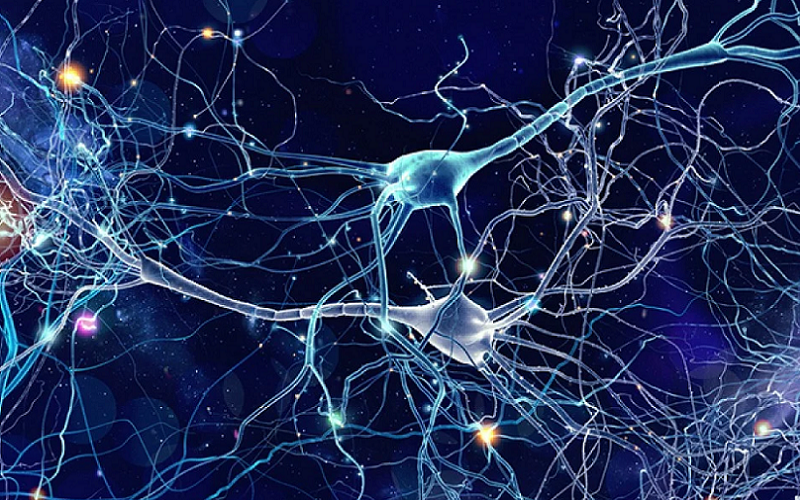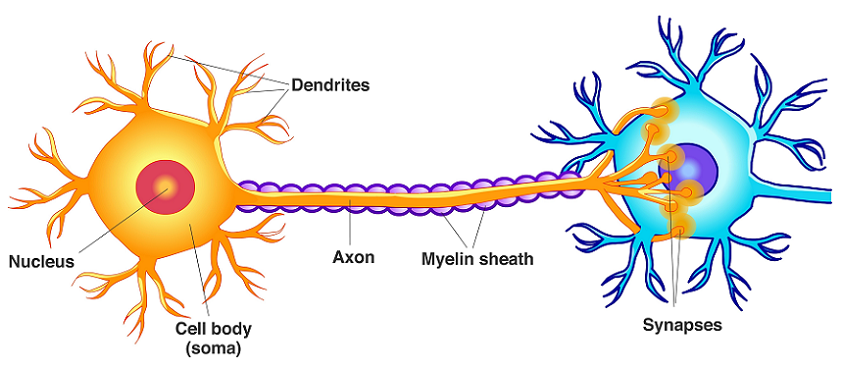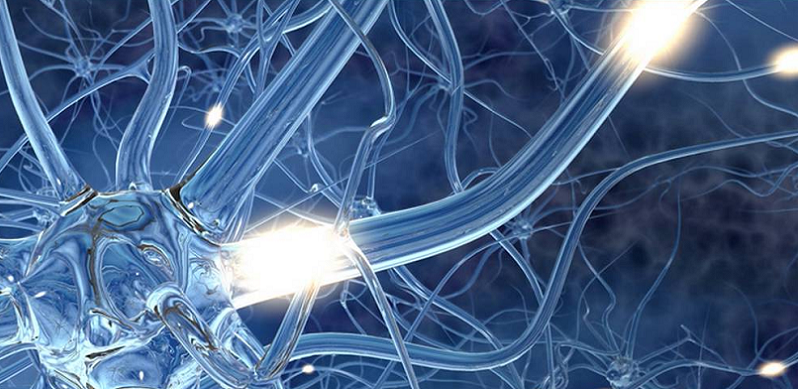
The intricate human brain, a mere three-pound universe within us, orchestrates every thought, movement, and sensation through a complex network of neurons. But how do these microscopic messengers communicate, collaborate, and command the symphony of our daily experience? Here we explore the enigmatic world of neurons. These are not just biological structures; they are the architects of our reality, shaping our perceptions, memories, and behaviors. By understanding how neurons communicate, work, and fire, we unlock the mysteries of consciousness and cognition.
Contents
- Introduction to Neuronal Communication
- How Neurons Communicate
- How Neurons Work
- How Neurons Fire
- References
Introduction to Neuronal Communication
The human brain, a marvel of nature, is an enigmatic organ that holds the key to our very essence. It is in this complex network of neural pathways that every thought, every memory, and every emotion originates. The brain’s ability to perform these incredible feats lies in the microscopic yet mighty neurons. In this article we illuminate the ways in which neurons communicate, function, and fire – the three pillars that uphold the vast empire of our cognitive processes.
Overview of the Brain’s Complex Network
The brain is often likened to a sophisticated computer, but such comparisons barely scratch the surface of its complexity. Composed of approximately 86 billion neurons, the brain’s network is a testament to biological engineering at its finest. These neurons do not operate in isolation; they form a dynamic, interconnected web that is constantly buzzing with activity. This network, intricate and finely tuned, is what enables us to perceive, think, react, and interact with the world around us.
Importance of Neuronal Communication in Brain Function
Neuronal communication is the cornerstone of brain function. Without the seamless exchange of information between neurons, the brain would be incapable of performing even the most basic tasks. This communication dictates everything from our reflex actions to our highest cognitive abilities. It influences how we learn, how we remember, and how we experience emotions. Understanding the mechanisms of neuronal communication is crucial for unraveling the mysteries of the brain and addressing various neurological and psychological conditions.
How Neurons Communicate
Understanding how neurons communicate is akin to unraveling the language of the brain. This process is fundamental to every action we take and every thought we conceive. Neuronal communication is an intricate ballet of electrical and chemical signals, allowing neurons to transmit messages rapidly and efficiently across vast networks.
The Basic Structure of Neurons
Before we can comprehend how neurons communicate, it’s crucial to understand their structure. Each neuron is a marvel of biological engineering, designed to transmit information.
Dendrites
Dendrites are tree-like extensions at the beginning of a neuron that receive signals from other neurons. These structures play a crucial role in gathering information, acting as the listening ears of the neuron [1].
Cell Body (Soma)
The cell body, or soma, is the neuron’s core, housing the nucleus and the machinery necessary for the neuron’s survival. It integrates the information received from the dendrites and decides if the neuron should pass on a signal.
Axon
The axon is a long, slender projection that transmits signals away from the cell body. It’s like the neuron’s personal transmission line, carrying messages to other neurons, muscles, or glands.
Synaptic Terminals
At the end of the axon are synaptic terminals, where the neuron communicates with other cells. This communication occurs at a specialized junction known as the synapse.
The Synapse: A Critical Junction
The synapse is where the magic of neuronal communication truly happens. It’s the pivotal point where one neuron connects with another.
Definition and Function
A synapse is a small gap between the synaptic terminal of one neuron and the dendrite of another. This gap ensures that the electrical signal can’t simply jump across, necessitating a more sophisticated method of communication [2].
Types of Synapses
There are two main types of synapses: electrical and chemical. Electrical synapses allow for direct flow of ions and are faster, while chemical synapses use neurotransmitters and are more common in the human brain.
Neurotransmitters: The Chemical Messengers
Neurotransmitters are the key players in chemical synapses. These molecules carry messages across the synaptic gap, converting electrical signals into chemical ones and back again.
Role in Neuronal Communication
When an electrical signal reaches the synaptic terminal, it triggers the release of neurotransmitters. These chemicals cross the synaptic gap and bind to receptors on the receiving neuron, continuing the chain of communication.
Examples and Their Functions
Various neurotransmitters play different roles. For instance, serotonin influences mood and emotion, while dopamine is linked to reward and motivation. Each neurotransmitter’s unique role is crucial for proper brain function.
Electrical Signaling in Neurons
Electrical signaling is the first step in neuron communication. This involves the movement of ions, creating a charge difference that results in an electrical impulse.
Resting Potential and Action Potential
Neurons have a resting potential, a state of readiness to fire. When stimulated, they experience an action potential – a rapid change in charge that travels along the axon [3].
Ion Channels and Neuronal Excitability
Ion channels in the neuron’s membrane open and close in response to signals, allowing ions to flow in and out. This movement of ions changes the electrical charge inside the neuron, leading to the propagation of the action potential.

How Neurons Work
After exploring the mechanisms of neuronal communication, it becomes essential to understand how neurons work in the broader context of the brain’s functioning. This involves looking at how these cells interact within neural circuits, process different types of signals, and contribute to our cognitive and physical capabilities.
Neural Circuits: Building the Network
Neurons don’t function in isolation; they work as part of larger networks known as neural circuits. These circuits are the foundation of all neural processing in the brain.
Formation of Neural Pathways
Neural pathways are created through the development and strengthening of synapses between neurons. These pathways are not static; they evolve based on our experiences, a phenomenon known as synaptic plasticity. This adaptability is crucial for learning and memory.
Plasticity and Learning
Plasticity is the brain’s ability to change and adapt as a result of experience. It is most evident during our early years but continues throughout our life. This flexibility allows for the learning of new skills, adapting to new environments, and recovering from brain injuries.
Integrating Signals
Neurons receive and process a vast array of signals, determining the appropriate response based on the type and strength of these inputs.
Excitatory and Inhibitory Inputs
Neurons receive two types of inputs: excitatory, which encourage the neuron to fire, and inhibitory, which discourage firing. The balance between these inputs determines whether a neuron will activate and pass on a signal.
Summation and Neural Response
Summation is the process by which a neuron integrates all incoming signals to decide whether to fire. This involves adding up the excitatory and inhibitory inputs, and if the net result crosses a certain threshold, the neuron will fire an action potential [4].
Role in Cognitive and Physical Functions
Neurons are integral to both cognitive processes, like thinking and memory, and physical processes, such as movement and sensation.
Sensory Processing
Sensory neurons play a vital role in processing information from our environment. They convert physical stimuli, such as light or sound, into electrical signals that can be interpreted by the brain.
Motor Control
Motor neurons are responsible for conveying signals from the brain to muscles, facilitating movement. They are crucial in performing voluntary actions and maintaining involuntary muscle activities like heart rate and digestion.
Memory and Learning
Neurons in specific areas of the brain, like the hippocampus, are critical for forming and retrieving memories. The strengthening of synaptic connections during learning leads to the creation of long-term memories.

How Neurons Fire
In the intricate world of neuronal communication, the process of a neuron firing is a pivotal event. This phenomenon is at the heart of how neurons relay messages and is fundamental to all neural activities, from basic reflexes to complex thought processes.
The Action Potential: A Closer Look
The action potential is a critical component of how neurons fire. It’s an electrical impulse that travels along the neuron’s axon, carrying signals to other neurons or to the body’s muscles and glands.
Stages of an Action Potential
An action potential occurs in several stages. It begins with depolarization, where the neuron’s internal charge becomes less negative. If this depolarization reaches a certain threshold, it triggers the action potential, leading to a rapid influx of sodium ions. This is followed by repolarization, where potassium ions flow out of the neuron, restoring the negative charge inside [5].
The Role of Voltage-Gated Ion Channels
Voltage-gated ion channels are crucial in this process. These channels open and close in response to changes in the neuron’s membrane potential. They allow the selective flow of ions, such as sodium and potassium, which are essential for the propagation of the action potential along the axon.
Propagation of the Action Potential
Once generated, the action potential needs to travel down the axon to reach the synaptic terminals. This propagation is a key step in neuron firing.
Along the Axon
The action potential travels along the axon like a wave. As it moves, it continually regenerates itself at different points along the axon, ensuring the signal remains strong and consistent in its journey to the synapse.
Myelination and Saltatory Conduction
In many neurons, the axon is covered by a myelin sheath, which helps speed up the transmission of the action potential. In these myelinated neurons, the action potential jumps from one gap in the myelin sheath (node of Ranvier) to the next, a process known as saltatory conduction. This leapfrogging effect significantly accelerates signal transmission.
Refractory Periods and Neuronal Limits
Following an action potential, neurons experience a brief refractory period, during which they cannot fire again. This period is essential for the proper functioning of neural signaling.
Absolute and Relative Refractory Periods
The refractory period is divided into two phases: the absolute refractory period, where no new action potential can be initiated, and the relative refractory period, where a neuron can fire but only in response to a stronger than usual stimulus. These periods ensure the unidirectional flow of the action potential and prevent the neuron from being overstimulated.
Implications for Neuronal Firing Rate
The refractory periods put a limit on how rapidly a neuron can fire. This rate is crucial as it influences the intensity of the signal being sent. For instance, a higher firing rate can indicate a stronger stimulus or a more urgent response.
References
[1] How do neurons communicate (so quickly)?
[2] Communication Networks in the Brain
[3] How Neurons Communicate
[4] Action potentials and synapses
[5] https://mhanational.org/neurons-how-brain-communicates

